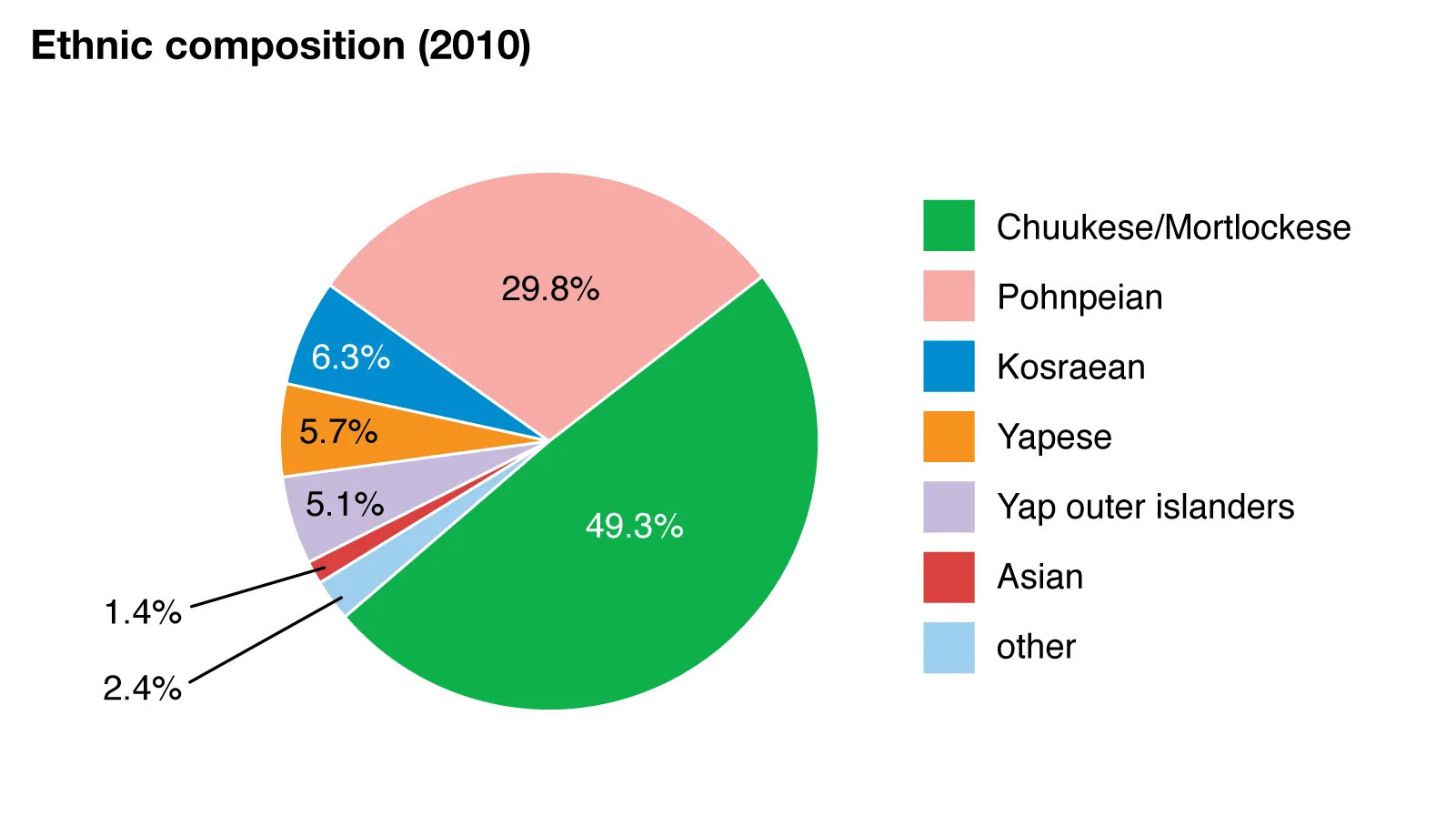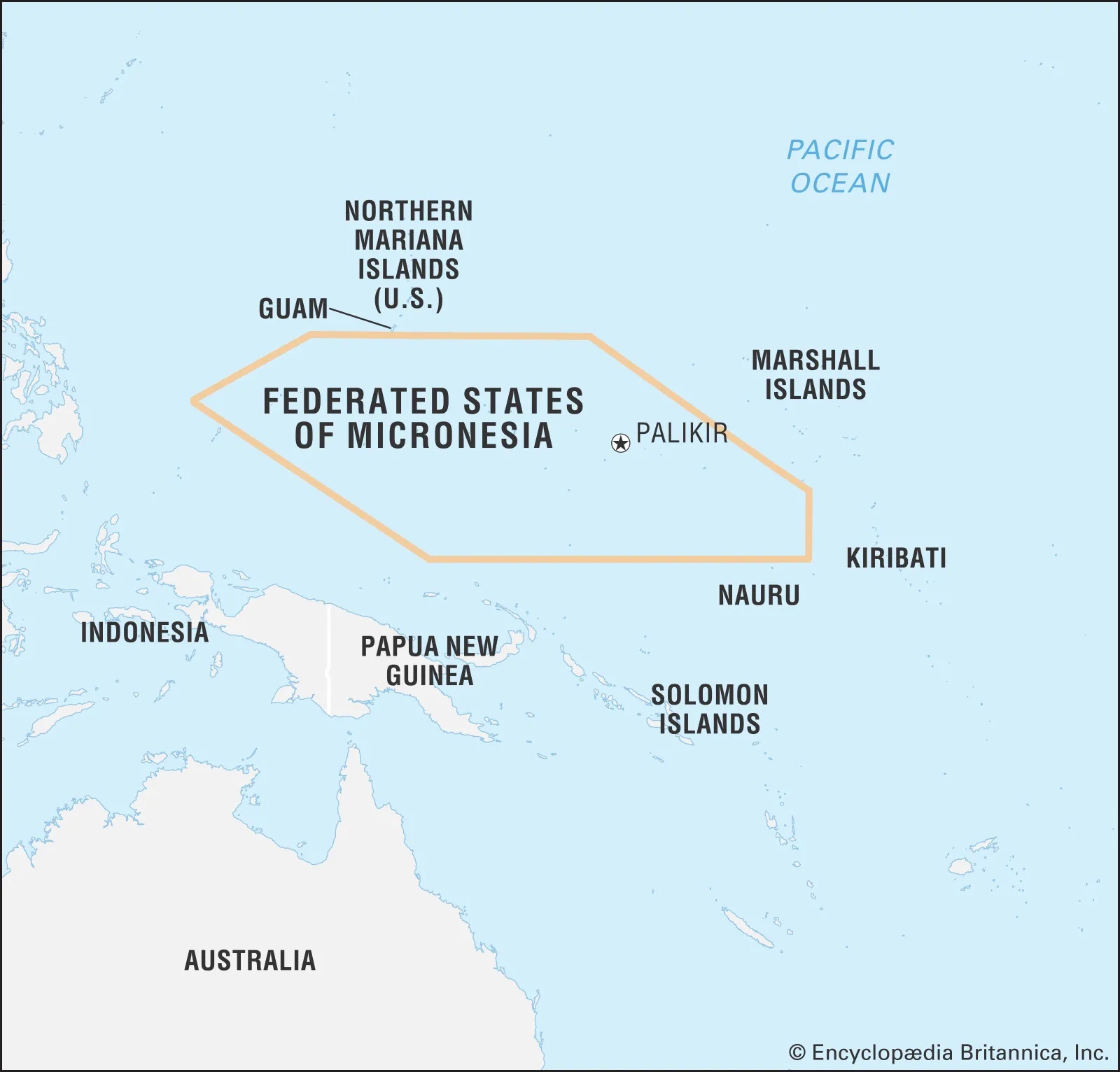Micronesia - A Featureless Expanse Of Ocean Dotted With Islands
Micronesia, a vast expanse of ocean dotted with small coral islands and islets, is characterized by its unique geographical features and limited resources. Stretching from the Gilbert Islands to the Marshall, Caroline, and Federated States of Micronesia, this equatorial region experiences steady winds, which result in low rainfall on the eastern islands but abundant vegetation on the high islands like Kosrae, Yap, Pohnpei, and Guam.
Author:Jane RestureJun 12, 202329.5K Shares468.5K Views
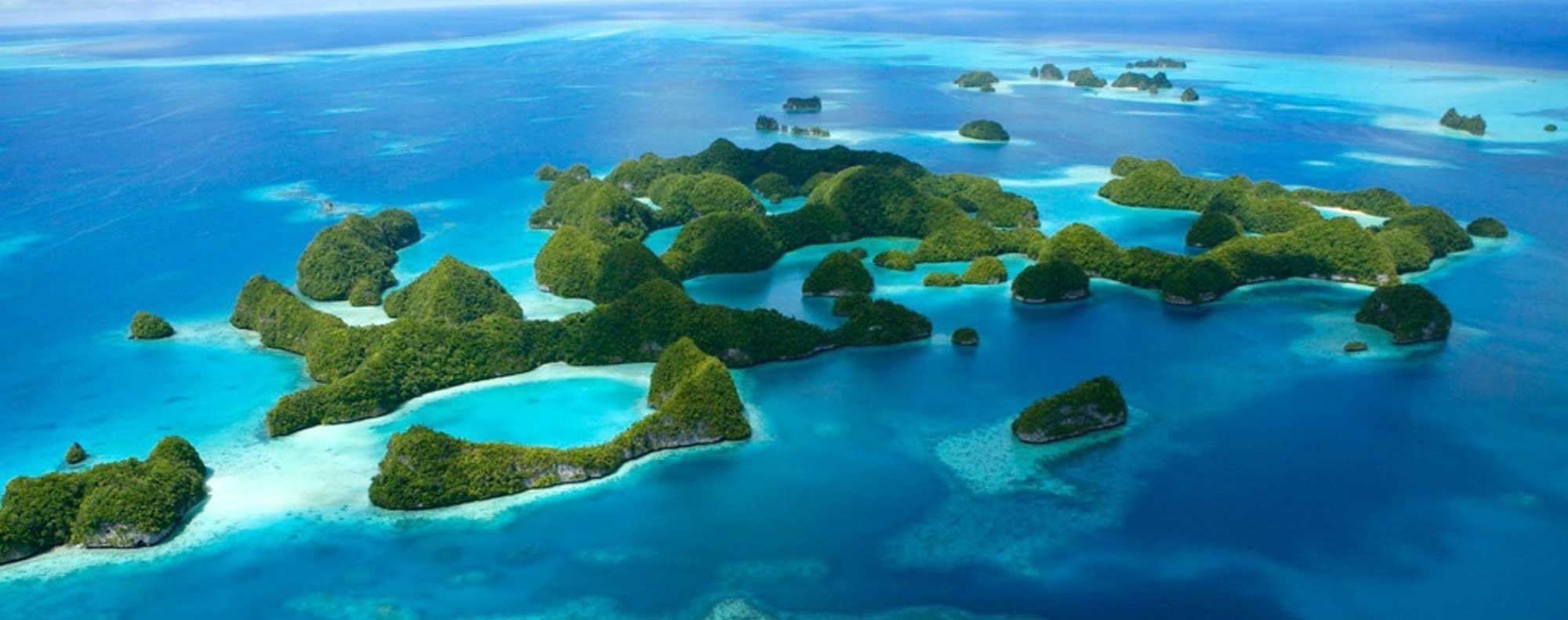
Micronesia, a vast expanse of ocean dotted with small coral islands and islets, is characterized by its unique geographical features and limited resources.
Stretching from the Gilbert Islands to the Marshall, Caroline, and Federated States of Micronesia, this equatorial region experiences steady winds, which result in low rainfall on the eastern islands but abundant vegetation on the high islands like Kosrae, Yap, Pohnpei, and Guam.
History Of The Eastern Caroline Islands
The eastern Caroline Islands, including the Marshall and Gilbert islands, were likely settled around 1000 BCE, originating from the region of the New Hebrides (now Vanuatu) and Fiji.

A Super Quick History of Micronesia
Early evidence suggests that the migrants gradually moved westward from the Marshalls, progressing through the chain of islands in the east. Excavations have uncovered pottery dating back to the 1st century CE in Chuuk, as well as similar artifacts in other eastern islands.
The languages spoken in the area, except for Yap and the two Polynesian outliers, Kapingamarangi and Nukuoro atolls, exhibit close relationships to one another and share striking similarities with the languages of Vanuatu.
The island of Yap, characterized by its high elevation, appears to have been settled from the west, possibly originating from the Philippines or Indonesia. Pottery and shell adzes found in Yap indicate settlement as early as the 2nd century CE, showing resemblance to types discovered in the Mariana Islands.
Yap's social organization, including its unique caste system, stands out from the rest of the region. The famous Yapese stone money, used as a form of currency, was quarried in nearby Palau and the Marianas.
Over time, a reciprocal tribute and trade system, referred to as the Yap Empire or Yapese Empire, developed with the surrounding coral atolls. In the eastern islands of Pohnpei and Kosrae, a major social upheaval occurred about seven centuries ago, possibly due to invasion from the south.
Fortified settlements were constructed using large basaltic logs, leaving visible ruins today, while political authority became centralized, leading to increased social stratification.
During the 16th century, Spanish navigators made occasional visits to the islands, which were later named after the Spanish king Charles II. In the 19th century, European naval ships followed whalers and traders to the region, marking the islands' first significant contact with foreigners. In 1886, Spain colonized the Carolines, but its rule was short-lived as the islands were sold to Germany in 1899 after the conclusion of the Spanish-American War.
Subsequently, Japan gained control of the islands at the outbreak of World War I, receiving formal title to them in 1920 as a League of Nations mandate. Japan initially aimed to develop a stable economy, later using the islands as a destination for surplus population and fortifying them just before World War II.
In July 1947, the Carolines, along with the Marshalls and Northern Marianas, became the United Nations Trust Territory of the Pacific Islands, administered by the United States. Designated as a strategic area, the responsibility for the trust territory rested with the UN Security Council, differing from other trust territories under the UN General Assembly's jurisdiction.
In 1969, Micronesian leaders initiated negotiations with the United States for full self-government. The drafted constitution in 1975 formed the foundation for the federated government that came into effect in 1979.
However, the Marianas, Marshalls, and Palau had decided to separate from the proposed federation by that time. Consequently, the "inner states" of Yap, Truk (later Chuuk), Kosrae, and Ponape (later Pohnpei) became the core components of the new political entity known as the Federated States of Micronesia.
In a 1983 plebiscite, voters approved a Compact of Free Association with the United States, which became effective on November 3, 1986. The compact granted internal self-government while maintaining U.S. responsibility for defense, external security, and financial assistance.
The articles of the compact allowed the Federated States of Micronesia to pursue full independence and modify its relationship with the United States through approved plebiscites. Originally set for a duration of 15 years, the compact was renewed in 2003 for another 20 years, with some amendments.
The renewed compact came into force in 2004. On September 17, 1991, the Federated States of Micronesia became a member of the United Nations.
The late 1990s posed significant challenges for the islands. President Bailey Olter suffered a debilitating stroke in July 1996, shortly after being reelected, coinciding with a series of natural disasters that struck the islands.
Typhoons, flooding, and mudslides caused extensive devastation in 1996 and 1997, while a prolonged drought resulting from the El Niño weather pattern forced the declaration of a state of emergency in 1998. During the subsequent years, cholera outbreaks on Pohnpei led to the implementation of a national vaccination program after claiming the lives of several dozen people.
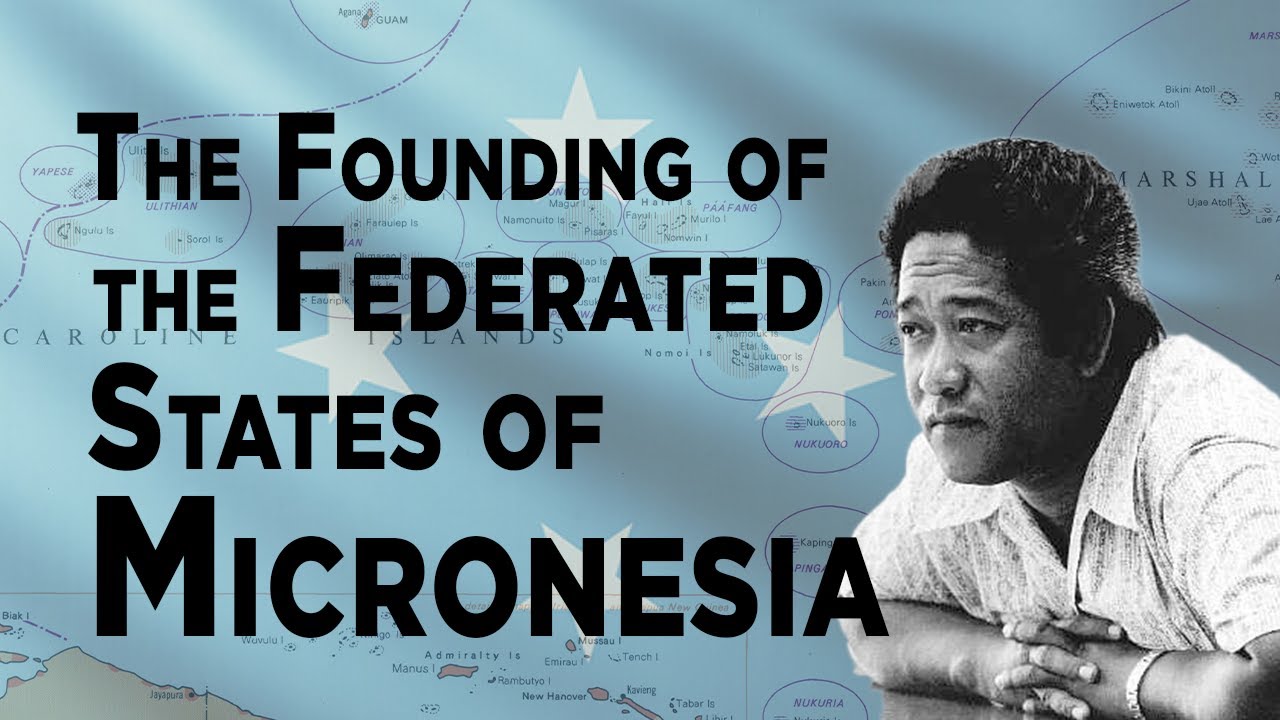
The Founding of the Federated States of Micronesia
In Chuuk state, a movement advocating for separate administrative status for the Faichuk Islands gained traction. In the early 21st century, legislation was introduced in the National Congress to consider admitting Faichuk as the fifth state within the Federated States of Micronesia.
Cultural And Linguistic Diversity In The Federated States
The people of the Federated States of Micronesia exhibit significant cultural and linguistic diversity within the Micronesian classification. Various islands and atolls within the nation have distinct languages, dialects, and cultural traditions, highlighting the rich tapestry of Micronesian heritage.
Yap And Chuuk
Yap Island stands apart linguistically, with its people speaking Yapese, a language distantly related to other Nuclear Micronesian languages in the region. However, the inhabitants of the coral atolls in Yap state share similarities in language and culture with the people of Chuuk, although Chuukese and Yapese are not mutually intelligible.
Chuuk And Pohnpei
Chuuk and Pohnpei, two prominent states within the Federated States, encompass several dialects within their linguistic repertoire. Meanwhile, the inhabitants of Kapingamarangi and Nukuoro, two atolls in the southwestern portion of Pohnpei state, are Polynesians and speak languages unrelated to the Pohnpeian language.
Kosrae
In contrast to the other states, Kosrae exhibits complete ethnic and linguistic unity, with a single language predominating. This unity fosters a more cohesive cultural and linguistic identity among the people of Kosrae.
Linguistic Variety
Altogether, the Federated States of Micronesia recognizes eight distinct local languages, each contributing to the linguistic tapestry of the nation. Dialectal differences found in the outlying atolls further contribute to the linguistic diversity observed across the country.
The Geographical Extent And Climate Of Micronesia
The scattered atolls provide isolated communities with a distinct environment, each with its own contrasting characteristics.
Although the resources in Micronesia are slender, the islanders have adapted to their environment. The sandy soil is not conducive to plant growth, but the coconut tree thrives, offering not only nuts but also a nutritious sap from its flower-stalk, plaiting material from its leaves, cordage and textiles from its husk fiber, and meager timber from spent trees.
Another essential tree is the pandanus, which provides edible fruit, admirable fiber from its leaves, and small timber for canoe outriggers and light woodwork. Taro, a starchy root crop, can also be grown in moist depressions in the sand. While animal resources are scarce, some chickens and pigs may be found on the islands.
Micronesian Culture - Ingenuity And Adaptation
Despite limited land resources, the ocean plays a significant role in sustaining the Micronesian people. The reef teems with squid, crabs, and shellfish in countless cracks and crevices, while fish abound in the sheltered lagoon and beyond.
Ocean-Based Sustenance
Fishing is the primary occupation for the atoll dwellers, and fishing tools such as lines, nets, sinkers, and hooks feature prominently in the local arts and crafts. Squid, crabs, shellfish, and an abundance of fish can be found in the cracks and crevices of the reef and the sheltered lagoon. Fishing, therefore, remains the primary occupation for those dwelling on the atolls.

Everyone should watch this ( Fishing in the micronesia)
Traditional Architecture And Crafts
Traditional houses in Micronesia exhibit distinct architectural features. Typically constructed using wood and thatch, these houses feature high, steep roofs that almost touch the ground.
Unique House Construction
Stone house platforms and thick-walled enclosures made of basaltic prisms can be observed on islands such as Yap, Ponape, and Guam, showcasing the resourcefulness of the Micronesian people in utilizing the materials available to them.
Resourceful Crafting
Implements and tools used in Micronesia are crafted from various sea products. Fish hooks are created from shells, and adzes are made by grinding down large auger shells or using the thick shells of giant clams.
Hoes and scrapers often utilize turtle bones. Personal adornment is also a notable aspect of Micronesian culture, with necklaces made from shells, teeth, or discs cut from larger shells being commonly worn.
Warrior Traditions And Artistic Expression
From the mastery of weaponry adorned with shark's teeth to the intricacies of artistic craftsmanship, Micronesian warriors embody a rich legacy that transcends martial prowess, reflecting their deep connection to artistic ingenuity.
Gilbertese (I-Kiribati) Warrior Tradition
Among the Micronesian cultures, the Gilbertese (I-Kiribati) are particularly known for their warrior tradition. Warriors are equipped with long, lacerating spears and swords adorned with rows of shark's teeth.
Some warriors even wear full suits of thick, closely plaited sinnet armor for protection in single combat. Accompanying attendants play a crucial role in fending off opponents' blows during combat.
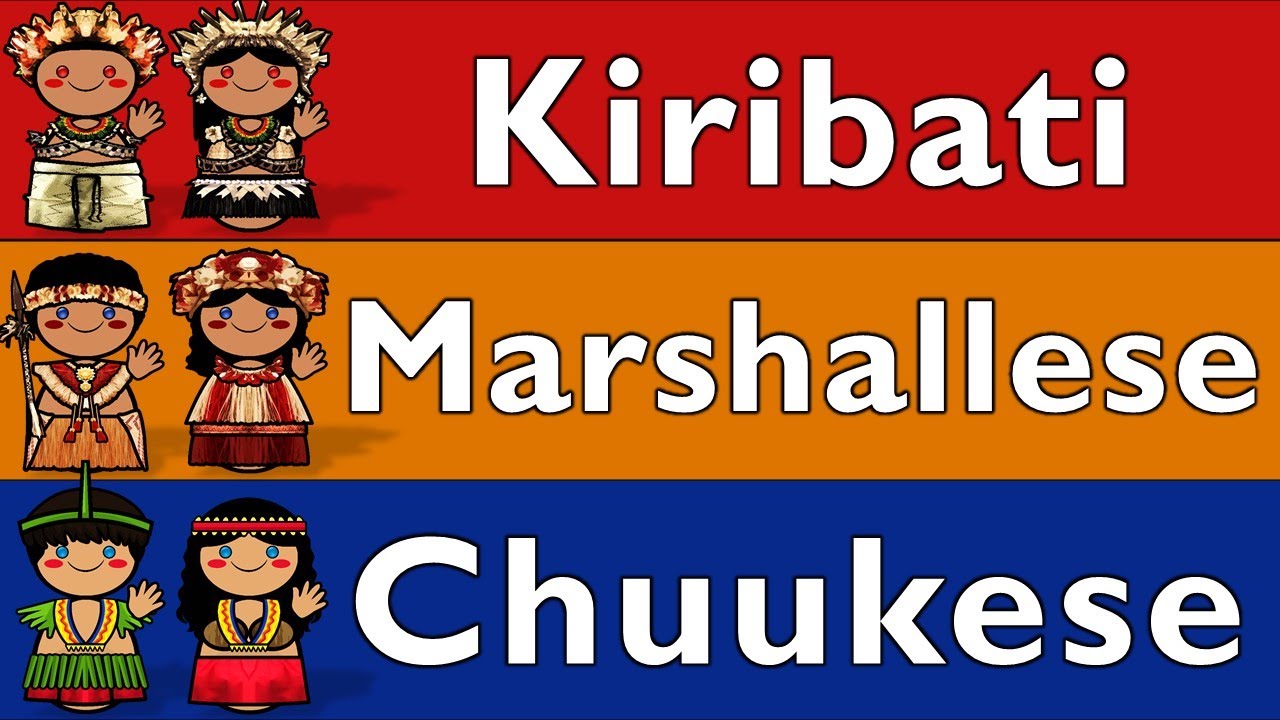
MICRONESIA: KIRIBATI, MARSHALLESE, & CHUUKESE
Limited Influences and Cultural Retention
Despite its proximity to Asia, especially Malaysia and China, Micronesia has not retained significant influences from these neighboring cultures. The scattered and diffuse nature of the islands may contribute to the limited retention of external influences.
Micronesian culture, while characterized by ingenuity and versatility in making the most out of limited resources, appears to have fewer elaborate feasts, organized ceremonies, and developed arts compared to Polynesia. Temple or marae-building is also less prevalent in the region.
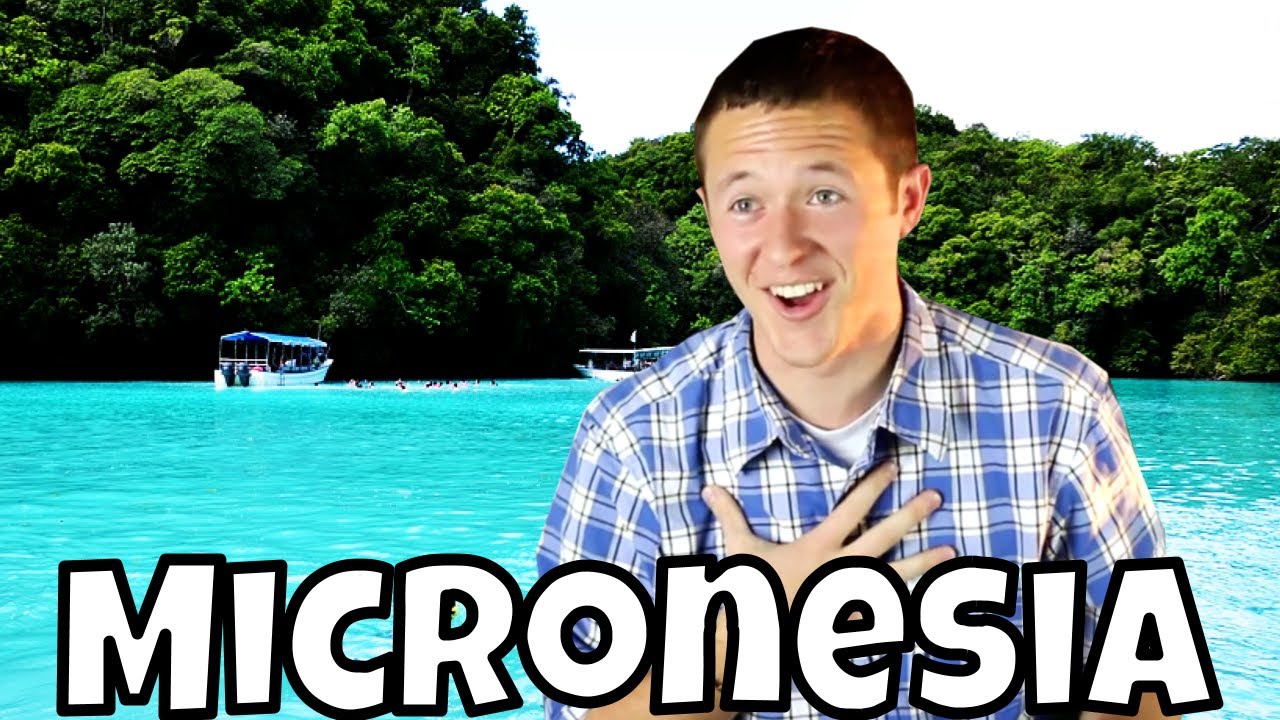
The truth about living in Micronesia (Kosrae, Pohnpei, Yap, Chuuk, etc)
Overall, Micronesian culture exemplifies the resourcefulness and adaptability of its people, utilizing the ocean for sustenance, employing innovative architectural techniques and crafts, maintaining unique warrior traditions, and showcasing their own artistic expressions. Despite limited external influences, Micronesians have developed a distinct cultural identity that reflects their ingenuity and adaptation to their environment.
People Also Ask
What Traditional Ceremonies And Rituals Are Celebrated In Micronesian Culture?
Micronesian culture is rich with traditional ceremonies and rituals that vary across different islands and communities. These include rituals associated with birth, coming-of-age, marriage, and death, as well as ceremonies to honor ancestors, celebrate harvests, and invoke blessings from the gods. These ceremonies often involve music, dance, offerings, and spiritual practices unique to each Micronesian island.
How Has Modernization Impacted Traditional Micronesian Art Forms?
The process of modernization has had an impact on traditional Micronesian art forms. While some traditional art forms continue to thrive and be preserved, others have experienced changes due to influences from external cultures, evolving materials, and changing societal dynamics. However, efforts are being made to revive and sustain traditional art forms through cultural preservation initiatives, education, and the support of local artists and communities.
What Are The Key Elements Of Micronesian Music And Dance?
Micronesian music and dance are characterized by rhythmic beats, melodic chants, and vibrant movements. Traditional musical instruments, such as drums, bamboo pipes, and shell trumpets, are often used. Each Micronesian island has its unique dance styles, showcasing various storytelling elements, gestures, and expressions. Music and dance play integral roles in celebrations, ceremonies, and social gatherings, fostering a sense of community and cultural identity.
How Is Traditional Micronesian Art Influenced By Nature And Spirituality?
Nature and spirituality deeply influence traditional Micronesian art. The connection to the natural environment, including the ocean, flora, and fauna, is reflected in artistic motifs and designs. Micronesian art often carries symbolic representations of spiritual beliefs, ancestral connections, and reverence for natural elements. This interweaving of nature and spirituality in art serves as a testament to the profound spiritual relationship that Micronesians have with their surroundings.
Conclusion
In conclusion, Micronesia's geography and limited resources have shaped the culture and way of life of its inhabitants. The islands' isolation has fostered self-sufficiency and adaptation to the environment.
While the land may be meager in resources, the bountiful sea provides sustenance. Micronesian culture reflects resourcefulness, simplicity, and a focus on practicality rather than elaborate rituals or structures. It is a unique and distinct region that has carved its own path in the vast expanse of the Pacific Ocean.

Jane Resture
Author
Since she embarked on her first world trip in 2002, Jane Resture spent the past decades sharing her personal journey and travel tips with people around the world. She has traveled to over 80 countries and territories, where she experienced other cultures, wildlife she had only read about in books, new foods, new people, and new amazing experiences.
Jane believes that travel is for everyone and it helps us learn about ourselves and the world around us. Her goal is to help more people from more backgrounds experience the joy of exploration because she trusts that travel opens the door to the greatest, most unforgettable experiences life can offer and this builds a kinder, more inclusive, more open-minded world.
Latest Articles
Popular Articles
